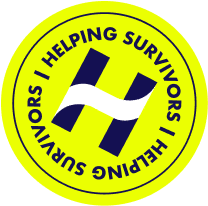Rideshare Sexual Assault: What to Do
If you or someone you know have experienced sexual abuse in a rideshare, you deserve to understand your options and legal rights including reporting to law enforcement or filing a claim against Uber or Lyft.


Have you experienced sexual assault or abuse?
We can help answer your questions and connect you with an attorney if you may have a case.
"*" indicates required fields

Author: Kathryn Kosmides
Survivor Advocate

Reviewed By: Melissa Reitberg
Uber Sexual Assault Attorney
- Thousands of passengers face sexual assault in rideshares annually and should know the steps to take if an incident occurs.
- Individuals should prioritize their safety, document the incident and driver details, and report it to the rideshare platform like Uber or Lyft as soon as possible.
- Consulting a rideshare sexual abuse lawyer can provide guidance on rights and options including seeking compensation through legal actions.
Steps After Rideshare Sexual Assault: An Overview for Survivors
While ridesharing services can offer convenience and ease, they also are dependent on a stranger trusting the driver and getting into their car. While most rides end with no issues for the riders or drivers, some do not — and these experiences of rideshare sexual harassment or abuse can have lifelong impacts to the victim.
In 2019, Uber published their first US safety report, which revealed that they had received 5,981 reports of sexual assault for 2017-2018. Later that same year, Uber agreed to pay a $9 million settlement in California for failure to provide information about sexual assault complaints made over two years by customers and drivers.
In 2021, Uber published their second US safety report, which reported 3,824 sexual assaults between 2019 and 2020. While the number of rideshare sexual assault appears to have decreased, there were also far fewer trips in 2020 because of the pandemic: 650 million in 2020 compared with 1.4 billion in 2019. In 2022, Uber published its most recent safety report for the years 2021-2022.
Lyft has only published two US safety reports, which showed they received 4,158 reports of sexual assault between 2017 – 2019 and 2,651 reports between 2020-2022.
Rideshare sexual assault has been a long-term known issue by rideshare companies, yet the harm continues to happen. Thousands of individuals who have experienced this abuse have started to come forward and file rideshare sexual assault lawsuits to begin to hold Uber and Lyft accountable and prevent future harm to others.
Yet, many individuals don’t report their abuse to the platform or speak to an Uber/Lyft sexual assault lawyer after the experience. This happens for a variety of reasons, including that individuals don’t fully understand what rideshare sexual assault is and their rights and options — which is why we’ve created this page so those impacted can get the information and help they deserve.
Rideshare Sexual Assault Examples:
- Inappropriate Touching or Groping
- Physical Sexual Assault
- Inappropriate Comments
- Inappropriate Questions
- Contacting You After the Ride and/or Stalking
If you have experienced any of the above, you deserve to understand what the best steps you can take to help ensure you can prevent future harm, seek help and healing, and hold the rideshare company accountable for the harm that happened.
- Steps After Rideshare Sexual Assault: An Overview for Survivors
- How to Document Rideshare Sexual Assault For Whatever Step You Take Next
- Rideshare Sexual Assault: Reporting Rights and Options
- Report Rideshare Sexual Assault to The Platform (Uber or Lyft)
- Report Rideshare Sexual Assault to Law Enforcement
- Filing a Sexual Assault Lawsuit Against Uber or Lyft
- Rideshare Sexual Assault Attorneys: Your Best Advocates for Justice
- What to Do After a Rideshare Sexual Assault FAQs
- Want To Speak With A Lawyer?
How to Document Rideshare Sexual Assault For Whatever Step You Take Next
After you are physically safe, you should independently write down what happened to you in your own words. You should try to include every detail you can remember in this document, even if you think it might not be relevant.
You may even find recording this through a voice note or voice recorder may be easier than physically writing it down at first.
Be sure you document the following:
- Who Was Involved
- Date/Time
- Where It Happened
- What Happened
- How You Feel
From there, you have different reporting rights and options – keep reading to understand each of them so you can make the best choices for you at this time.
Rideshare Sexual Assault: Reporting Rights and Options
Whether the harm just happened or it happened months or years ago, you have different rights and options. You can choose to take all or none of these steps after the harm, and we understand that it is a very difficult time and you are likely very shaken up. Each step may or may not be relevant to you and even if you’ve already taken some steps, like reporting to the platform but not talking to a professional rideshare sexual assault attorney, you can still seek support to understand what you can do next.
First, you should always seek physical safety and medical support if necessary. This will depend on the type of harm that happened to you – but we recommend visiting a hospital, urgent care, or your regular physician as soon as possible after experiencing any physical assault or abuse. This can help create medical documentation of the experience and your physical and mental state following the experience. You can and should visit a medical professional even if you do not want to have a sexual assault forensic exam (SAFE exam – also known as a rape kit) or if that is not relevant. This is just as much for you to get any necessary medical assistance as to create documentation that may be helpful later on whether to seek time off from work or for a civil lawsuit against Uber or Lyft.
Report Rideshare Sexual Assault to The Platform
(Uber or Lyft)
Each app has their own reporting processes and policies, which is why writing down all the details prior can be helpful to ensure you share all important details. It is helpful to understand the company’s reporting process and policies, and you may want to record you filing the report with the app/platform (like recording the screen) and ensuring you attach all relevant documents like a police report if you have filed one already. Most people tend to report to the platform first and then file a police report, usually after speaking to an experienced rideshare sexual assault law firm.
The platform may or may not get back to you, and you should ensure you are documenting any future interactions with law enforcement and with the ridesharing company including any phone calls or emails. Get as much in writing as possible and if there are phone calls, you have the right to record them (depending on your state recording laws you may have to announce you are recording).
To report a safety incident with Uber, you can follow these steps:
- Go to the Uber app.
- Tap “Help”.
- Tap “Help with a trip,”.
- Pick the trip during which you were assaulted.
- Tap “Report safety issue” on the “Trip details” page.
- Then, tap “Report a safety incident involving a driver” and write your complaint.
- You can also tap “call support” at the bottom of the “Help” page to call Uber.
To make a report with Lyft, follow these steps:
- Go to your Lyft app.
- Tap the menu icon in the top left corner.
- Tap “Ride history.”
Select the ride during which your sexual assault occurred. - Tap “Get Help” (on iOS devices) or “Request Review” (on Android devices). This will direct you to a chat with Lyft’s help bot, which will connect you with a representative.
- Select “Report driver behavior.”
- Select “Unsafe or Threatening Behavior.”
Lyft uses a chatbot service which can connect you to a customer support agent immediately.
Each platform may request more information over email, live chat, or phone. Remember to record and/or document all interactions with the company after you file the report.
Report Rideshare Sexual Assault to Law Enforcement
Reporting any type of sexual abuse to law enforcement is a very personal choice. However, in the case of rideshare sexual assault, this is a critically important step to help prevent future harm and hold Uber or Lyft accountable. The police take these types of cases seriously and the report you file creates a critical paper trail whether you choose to file a rideshare sexual assault claim or lawsuit or not. However, without a report to law enforcement, your ability to file a legal claim against Uber or Lyft diminishes significantly.
You can have someone you trust go with you to report and you can call in advance to know when their gender-based violence officers are available to take your report if you want to speak with someone with more training in this type of harm. The sooner you file a report with law enforcement, the better. You can also contact a law firm that supports survivors of rideshare sexual assault prior to filing a report and they can help you with the process.
An individual can not press criminal charges against someone, that is the job of the state prosecutor. When you file a police report, you are reporting a crime as a witness and should not feel guilty for reporting the harm that happened to you.
Filing a Sexual Assault Lawsuit Against Uber or Lyft
It is suspected that tens of thousands of individuals have experienced rideshare sexual assault in an Uber or Lyft. The law firms representing these survivors focus their claims that Uber and Lyft did not fulfill their duty of care.
Uber and Lyft Negligence Cited in Civil Lawsuits
Poor Hiring Practices
Although rideshare platforms perform background checks on drivers, background checks have tremendous flaws and issues that allow individuals with violent sexual records to get employment as a driver.
Deceptive Marketing
Some victims are suing Uber for deceptive marketing practices that perpetuate a false image of safety by featuring their NGO partnerships and background check information despite the flaws and harm still happening.
Lack of Monitoring Drivers
Individuals are suing Uber for failing to monitor its drivers during trips and during their work relationship with the company. This includes a lack of in-car cameras and in-app safety reporting and support.
Both Uber and Lyft have received a fair amount of criticism over complaints that they don’t do enough to protect riders and drivers from sexual abuse, assault, and harassment. The companies have attempted to deny liability in these cases, maintaining that their drivers are not employees and that they do various things to attempt to mitigate the harm to both drivers and passengers.
While Uber and Lyft have previously partnered with NGOs like RAINN and NO MORE, offer some basic in-app safety features such as an emergency button, and perform basic background checks on drivers, many believe they can and should be doing more.
Increasingly, victims are filing lawsuits against ridesharing apps – and there are different processes for Uber and Lyft sexual assault survivors.
We can connect you to a rideshare abuse law firm today.

This is because in October 2023, the Judicial Panel on Multidistrict Litigation (JPML) agreed to consolidate all of the pending Uber sexual assault cases in federal courts into a Multi-District Litigation (MDL). The Uber sexual assault MDL has been assigned to Judge Charles Breyer in the Northern District of California.
As of March 2024, Judge Charles Breyer has directed Uber to provide documents related to government investigations into sexual misconduct by Uber drivers. There are now over 100 active cases under the MDL and Helping Survivors is working with the leading law firms who helped craft the master complaint that serves as a consolidated document outlining the common allegations and legal claims brought forth by the plaintiffs across the hundreds of separate lawsuits. In summation, it argues that while Uber has known since 2014 that sexual assault was a prevalent and growing problem, Uber allegedly prioritized rapid expansion and profits over passenger safety, neglecting to adopt stricter safety measures like in-car cameras and enhanced background checks.
Lyft sexual assault lawsuits remain independent from each other, although the increasing number of claims filed in recent years may push the courts to follow suit and consolidate claims.
Whether you have experienced rideshare sexual assault in an Uber or a Lyft, an experienced law firm can help guide you through the exact steps you can take next, wherever you are in this process.
Rideshare Sexual Assault Attorneys: Your Best Advocates for Justice
Many individuals have never spoken to an attorney in their life — and often don’t know how they can help or what to ask to ensure their expertise. An experienced attorney can help you seek justice and get the help you need and deserve so you can focus on healing from what happened to you.
An experienced rideshare sexual assault lawyer can:
1. Help You Document the Experience
A lawyer can help review what you documented about the experience and ask follow up questions to ensure all of the important details are captured
2. Help You File Report with Rideshare Platform
If you haven’t filed a report with the platform already, they can go through the process with you and ensure you share all of the most important information. They can also help you document this process and will handle all future communications with the platform.
3. Help You File Report with Law Enforcement
While you don’t need a lawyer to file a police report, a lawyer can help prepare you for this process and may even be able to go with you when you file the report. They know what details are important to include and can advocate for you in the investigation process.
4. File a Sexual Assault Claim Against Uber or Lyft
Depending on what happened and on what platform, an experienced attorney knows exactly what to do while ensuring this process is as easy as possible for you.
The law firms that Helping Survivors works with to assist rideshare sexual assault survivors offer free consultations – which means you can discuss your experience for free with an experienced law firm so you know what you can do to get the help you deserve.
Additionally, every law firm we work with for rideshare sexual assault cases take them on contingency, meaning if the firm takes your care, individuals do not have to pay upfront legal fees. Instead, when the firm wins or settles the case, they take a percentage of the monetary compensation and the rest is given directly to the survivor.
Settlements or monetary compensation for rideshare sexual assault claims vary depending on the type of harm you experienced and the facts surrounding the case. But many survivors have been able to get the support they need to heal and move forward after settling sexual abuse claims.
What to Do After a Rideshare Sexual Assault FAQs
You can report to the platform at any point following the experience, however you should do so as soon as possible. The ability to press charges and prosecute the case in criminal court depends on the statute of limitaitons the state the incident happened in. This is why reporting and contacting an experienced lawyer as soon as possible after an experience can make a difference in your ability to seek justice.
The ability to file a sexual assault lawsuit against Uber or Lyft depends on the civil statute of limitations in the state the harm occurred. You should immediately get in touch with an experienced attorney even if you believe the statute of limitations may have expired.
A rideshare sexual assault case settlement depends on a variety of factors surrounding the incident. While many cases have not settled and precdent for these types of cases is broadly unknown, based on the firms Helping Survivors works with, rideshare sexual assault lawsuits tend to average $100,000 per claim.
An experienced attorney can help keep your information confidential when filing a rideshare sexual assault claim — although this may depend on the jurisdiction. In most cases, you can prevent your information from being public.
If you have questions about your rights and options after epxeriencing any form of rideshare abuse, assault, or harassment, you can reach out to Helping Survivors. We can put you in touch with the best organizations, resources, and law firms who can get you the help you need and deserve.
Want To Speak With A Lawyer?




